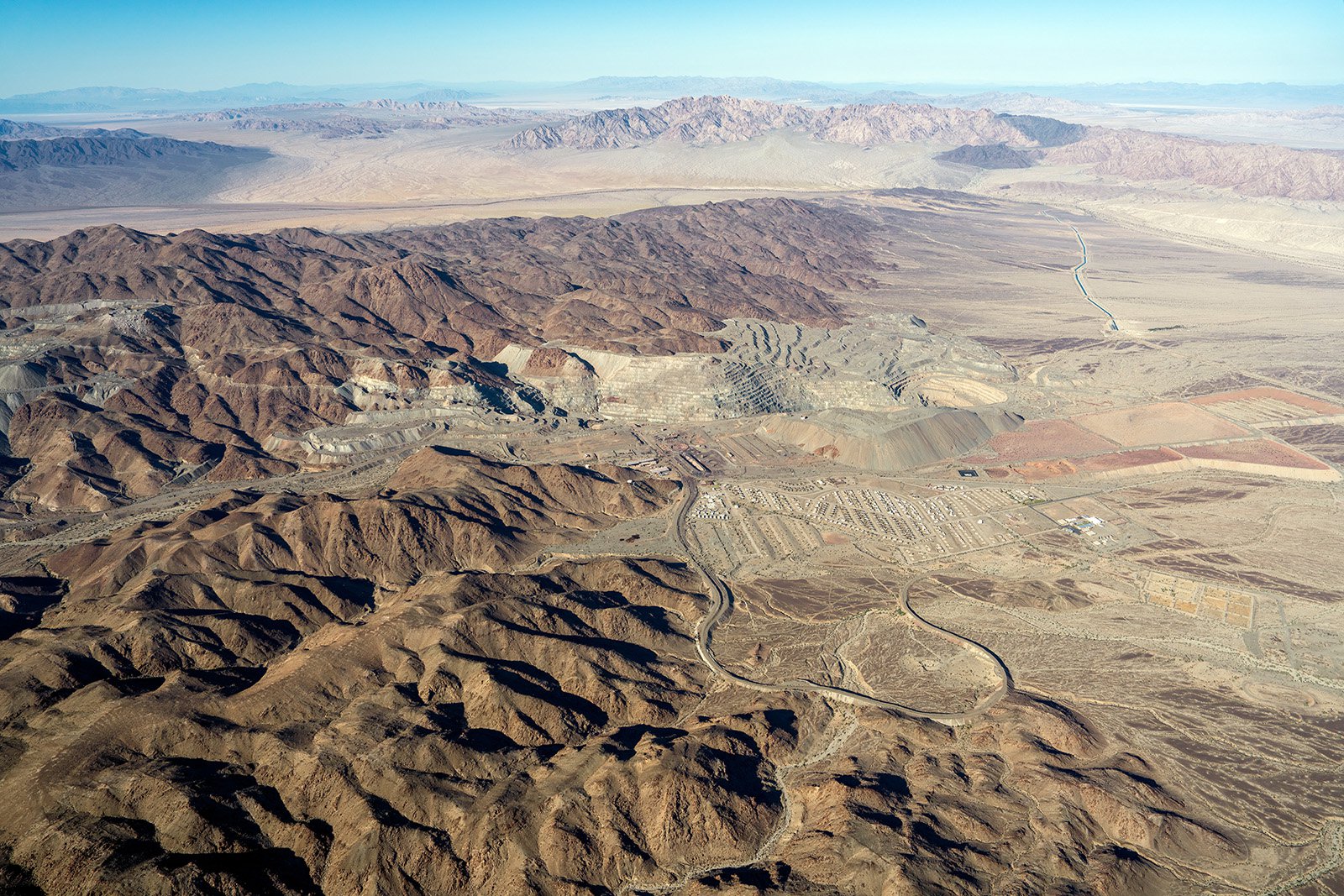
Deep within the California desert, the abandoned town of Eagle Mountain, California stands as a haunting testament to the rise and fall of a once-thriving mining community. Nestled on the edge of Joshua Tree National Park, this ghost town holds secrets and stories that continue to captivate the imagination of adventurers and history enthusiasts alike.
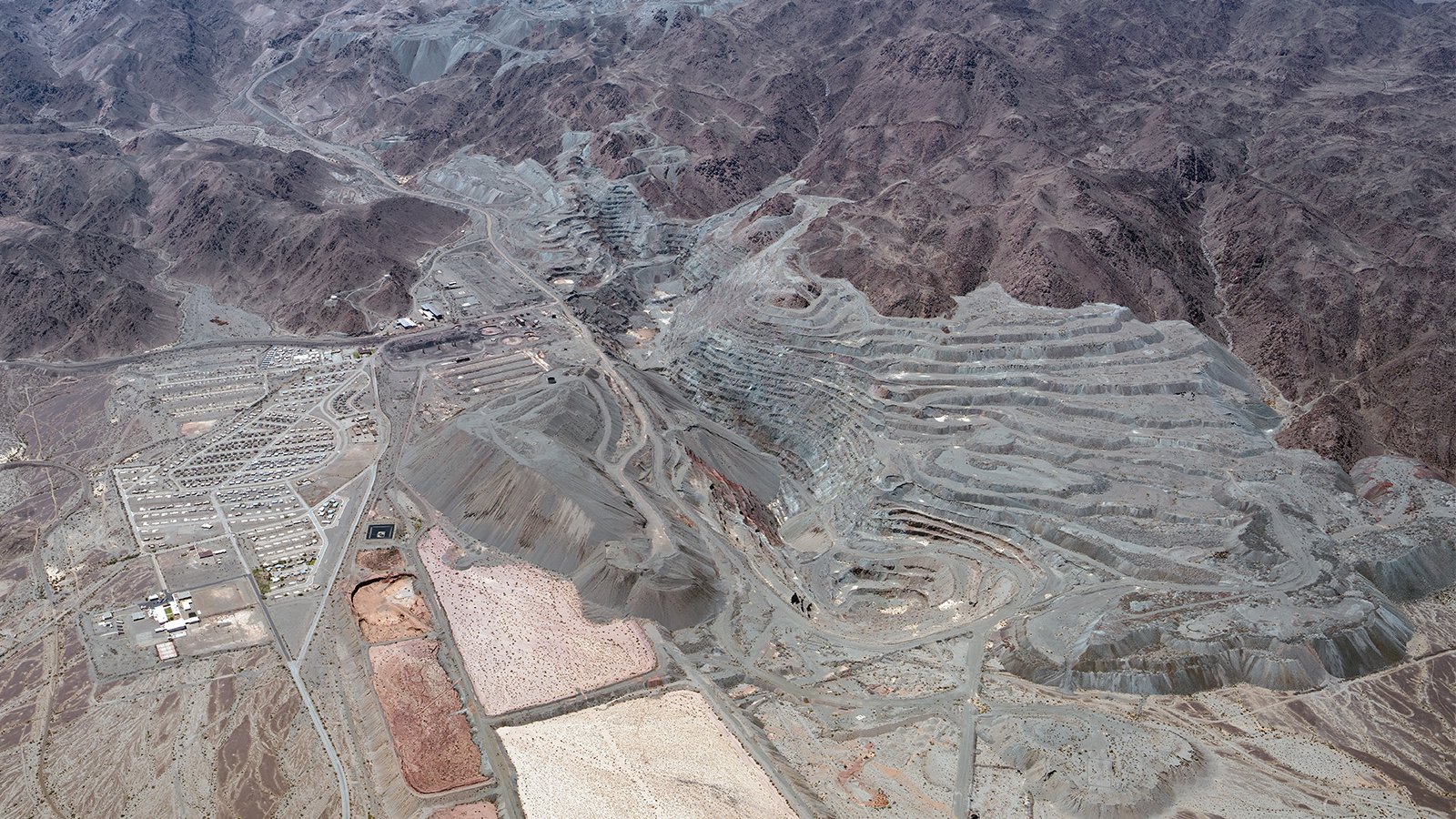
Aerial photo of the now-defunct Eagle Mountain iron mine and the surrounding ghost town, the once thriving industrial and residential areas now a spectral image of the past.
The Rise and Fall of Eagle Mountain
Eagle Mountain’s story began in 1948 when industrialist Henry J. Kaiser founded the town to support the mining of iron ore in the area. Located in the California desert in Riverside County, Eagle Mountain was home to Southern California’s largest iron mine, which was initially owned by the Southern Pacific Railroad and later by Kaiser Steel. The town experienced a boom during its mining heyday, with a thriving community and bustling streets. However, the decline of the mining industry and the eventual closure of the mine in 1981 led to Eagle Mountain becoming a ghost town, leaving behind abandoned structures and desolate streets.
Despite its untimely end, Eagle Mountain continues to intrigue visitors who are fascinated by its rich history and eerie remnants. From the still-operating Eagle Mountain School to the abandoned structures and empty streets that bear witness to a once-thriving community, the town offers a unique glimpse into a bygone era.
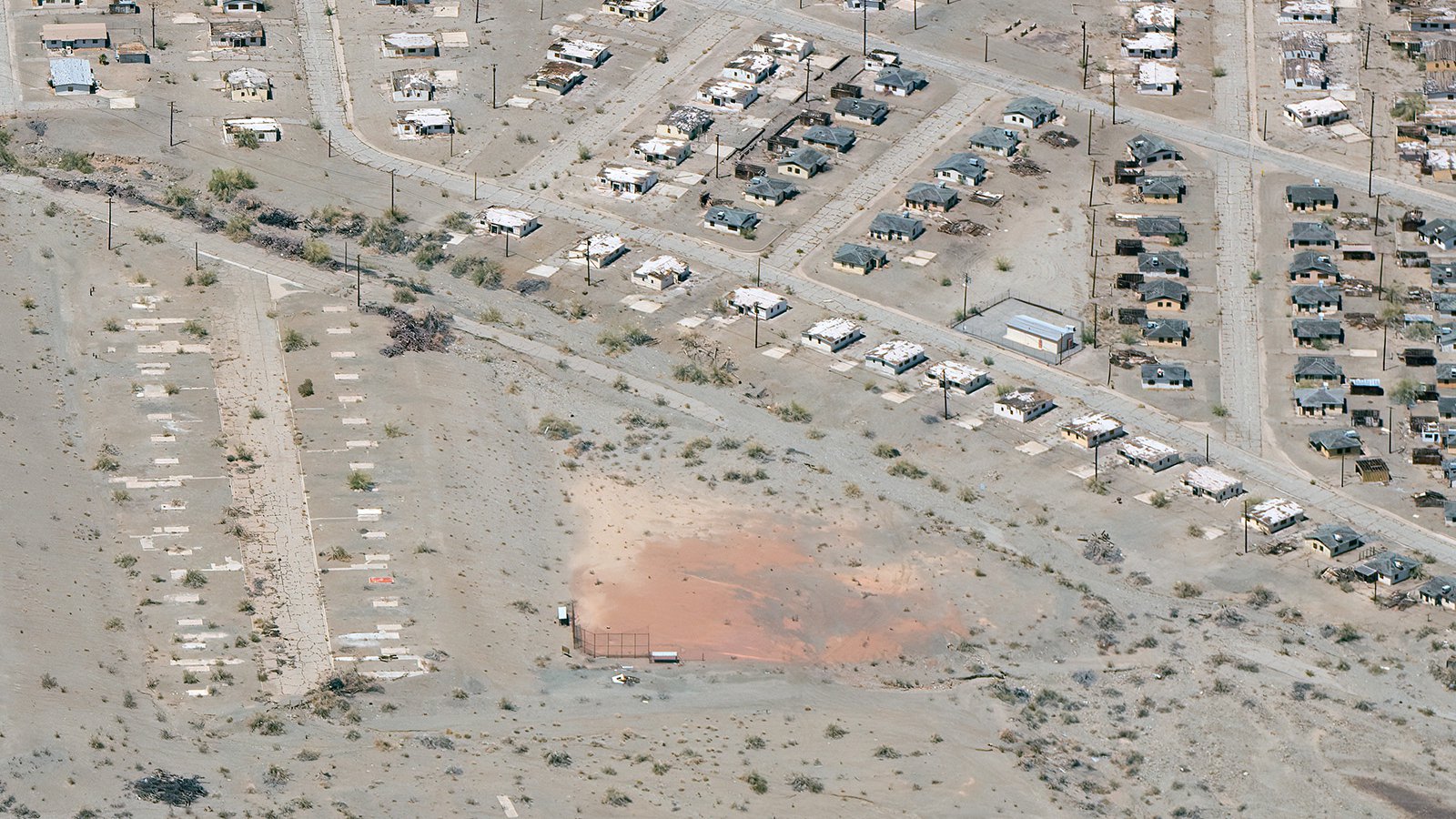
A powerful aerial image of a forsaken baseball diamond, its surrounding abandoned homes a stark reminder of the community that once flourished in Eagle Mountain.
The Mining Boom
Kaiser Steel Corporation catered to its workers during the mining boom by providing amenities like the Eagle Mountain Railroad, housing, and recreational facilities. At the height of mining production, Eagle Mountain had a population of 4,000 and employed 977 personnel at the mine. The town was bustling with activity, from the lively shopping center to the baseball diamond and bowling alley. The mine’s success was celebrated in 1977 with a ceremony commemorating the shipment of its 100 millionth ton of iron ore.
Yet, as the mining industry began to decline, so too did the fortunes of Eagle Mountain. Heightened environmental concerns coupled with stiff foreign competition in the 1970s triggered a drop in iron production, leading to staffing cuts and ultimately, the closure of the mining company operating in the area.
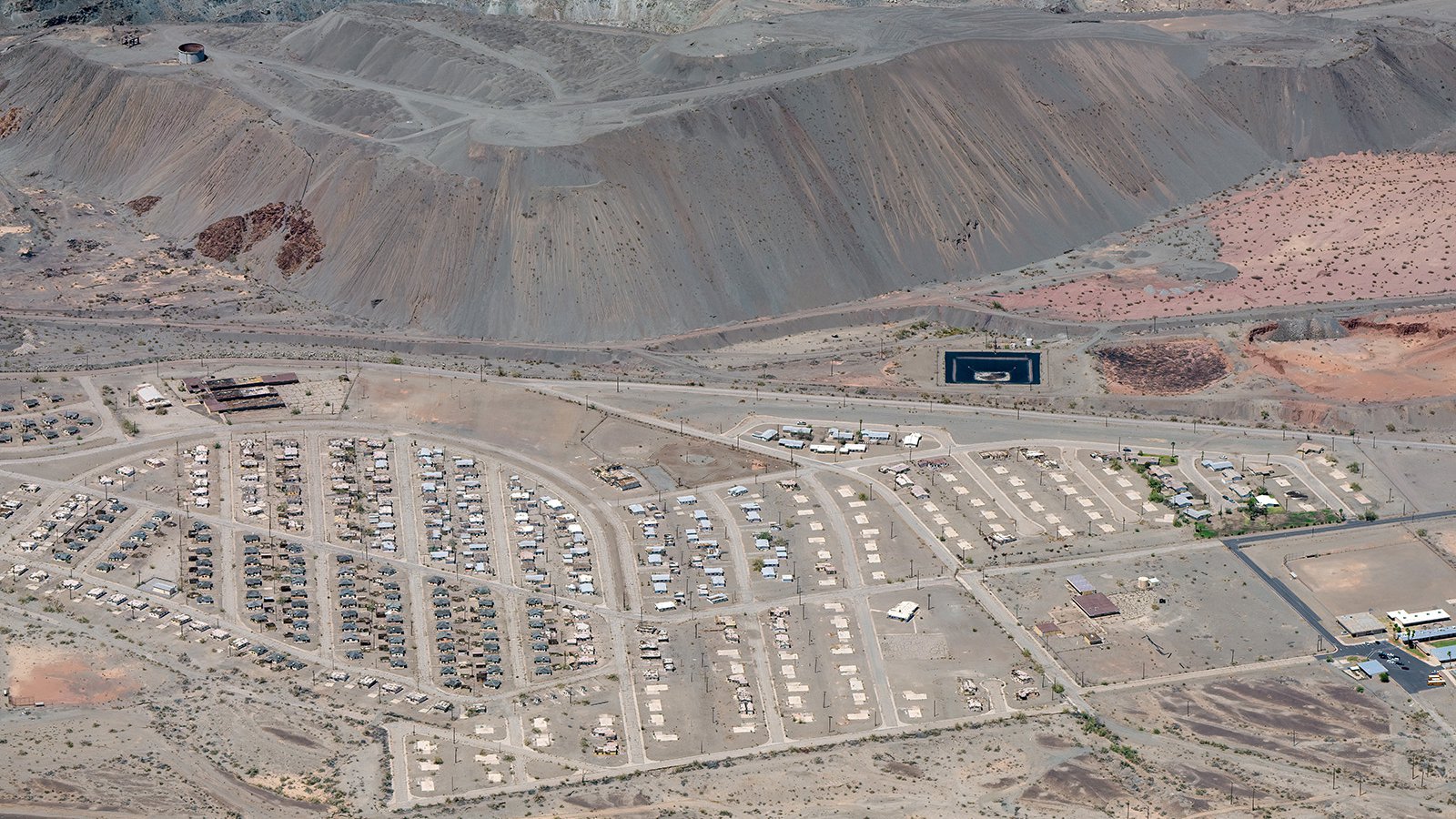
Aerial view capturing the vast expanse of the defunct Eagle Mountain iron mine and the ghost town that sits in its shadow.
Decline and Closure
The closure of the iron mine had a devastating impact on Eagle Mountain. October 1982 witnessed the closure of the town’s grocery store, and the post office followed suit in 1983. With the loss of jobs and essential services, the population dwindled, and the once-bustling community became a ghost town. The last official high school graduating class of Eagle Mountain’s school celebrated their graduation in June 1983 before the school’s conversion to become a kindergarten through eighth grade school for the area's few remaining students -- which dropped from 75 students in 1985 to just 19 students in 2008.
Today, Eagle Mountain stands as a haunting reminder of the transient nature of boomtowns and the impact of industrial decline. Once a thriving company town, its abandoned structures and empty streets now evoke a sense of eerie desolation, offering visitors a unique window into the past.
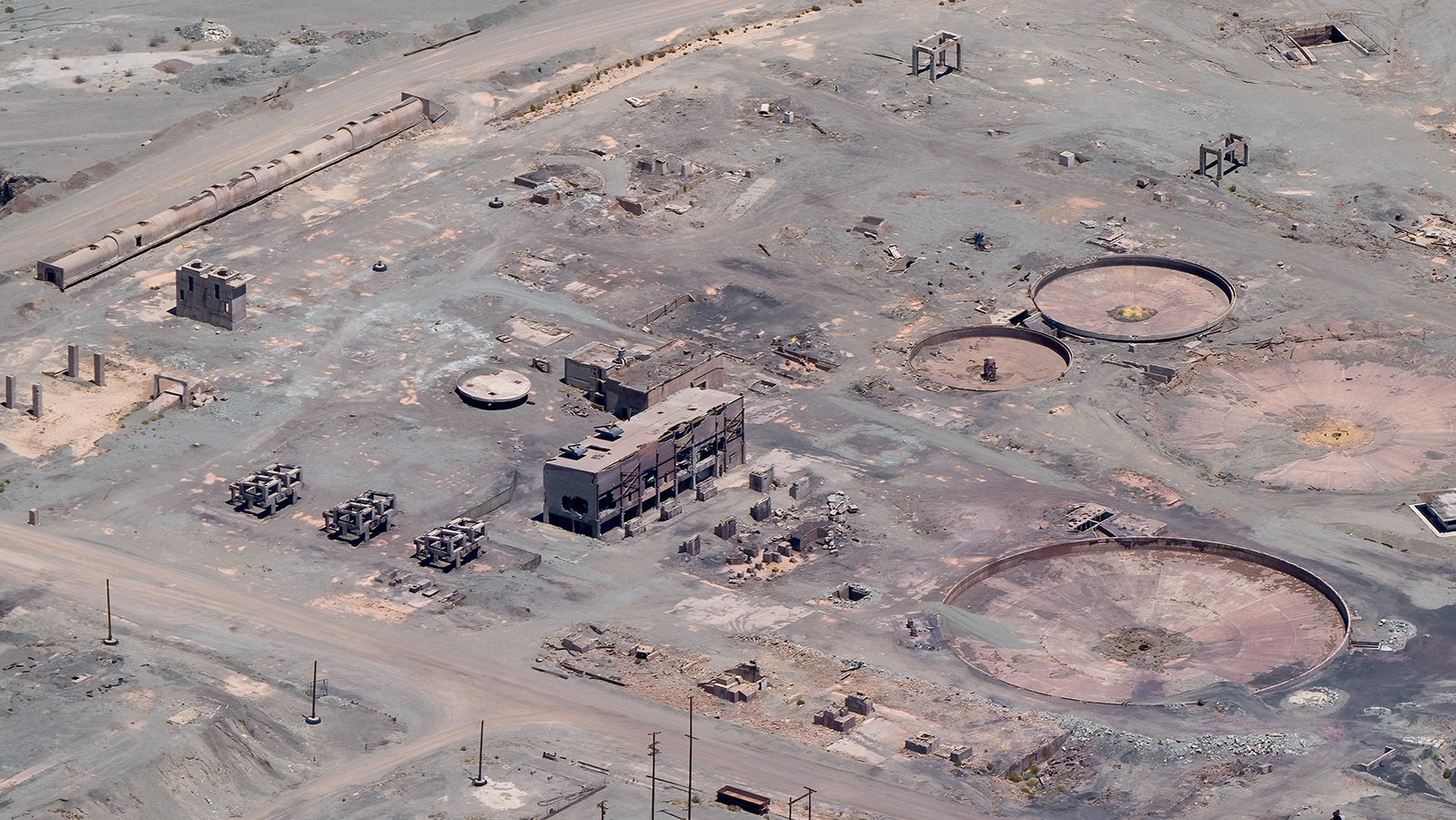
Bird's eye view of the deserted structures that were once buzzing with life at Eagle Mountain.
Life in a Ghost Town
Life in the California ghost town of Eagle Mountain is a far cry from the bustling mining community it once was. The town’s remaining structures are gradually deteriorating in the harsh desert, while its deserted streets serve as a stark reminder of the people who once called this place home. Yet, amid the desolation, there are still some signs of life and history that persist.
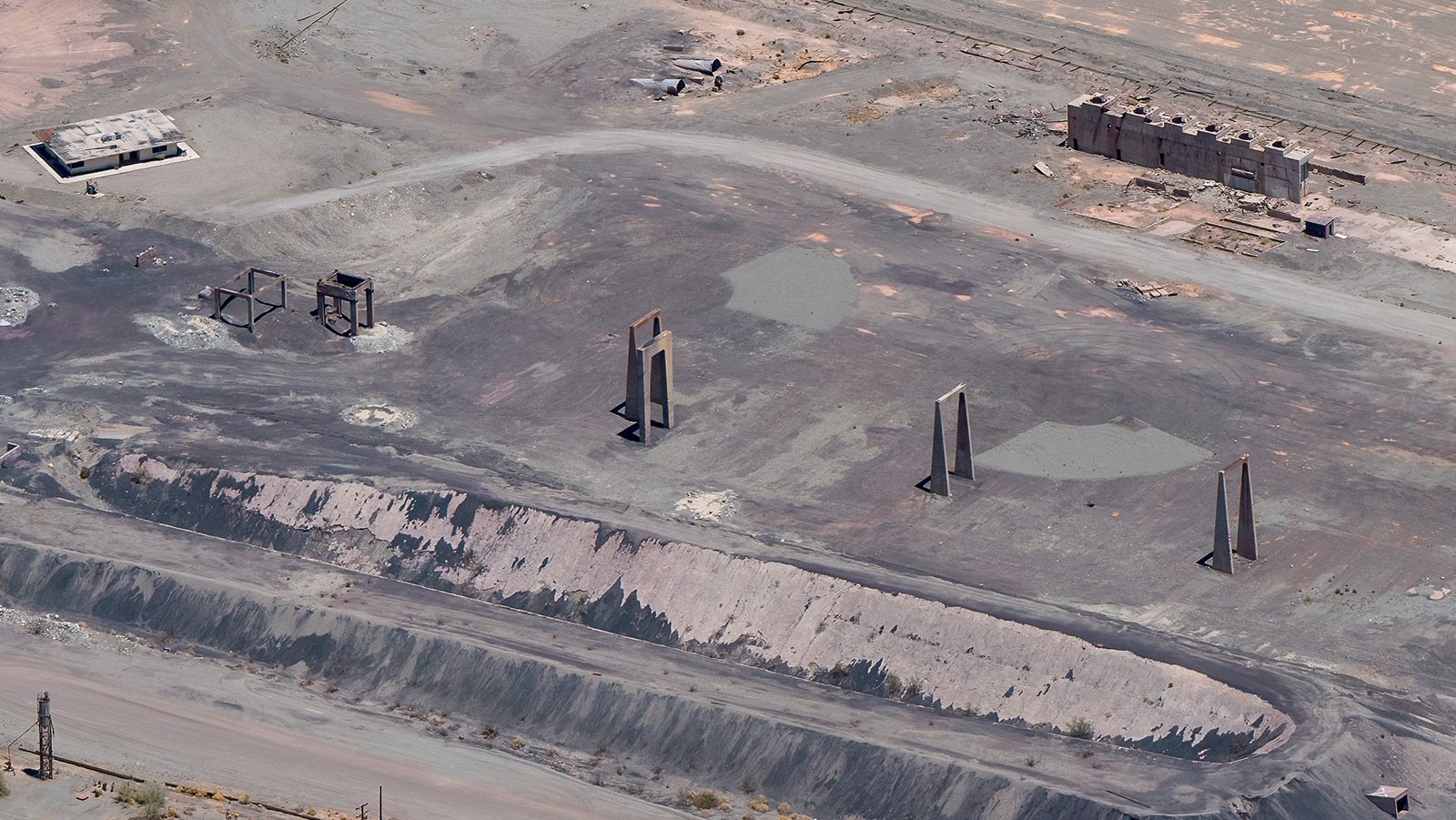
The abstract, abandoned structures at Eagle Mountain, with their unique architectural forms, serve as the perfect backdrop for numerous films and TV shows.
Hollywood Connections
Hollywood filmmakers and television producers have been drawn to the haunting beauty of Eagle Mountain. The town has served as a filming location for various movies and TV shows, including Top Gear USA and the Christopher Nolan feature film Tenet, starring John David Washington and Robert Pattinson.
Eagle Mountain’s desolate landscape and abandoned structures provide a dramatic backdrop for film and television productions, offering a striking visual representation of the passage of time and the forces that shape the rise and fall of communities. As more productions are drawn to this unique location, the story of Eagle Mountain continues to captivate audiences around the world.
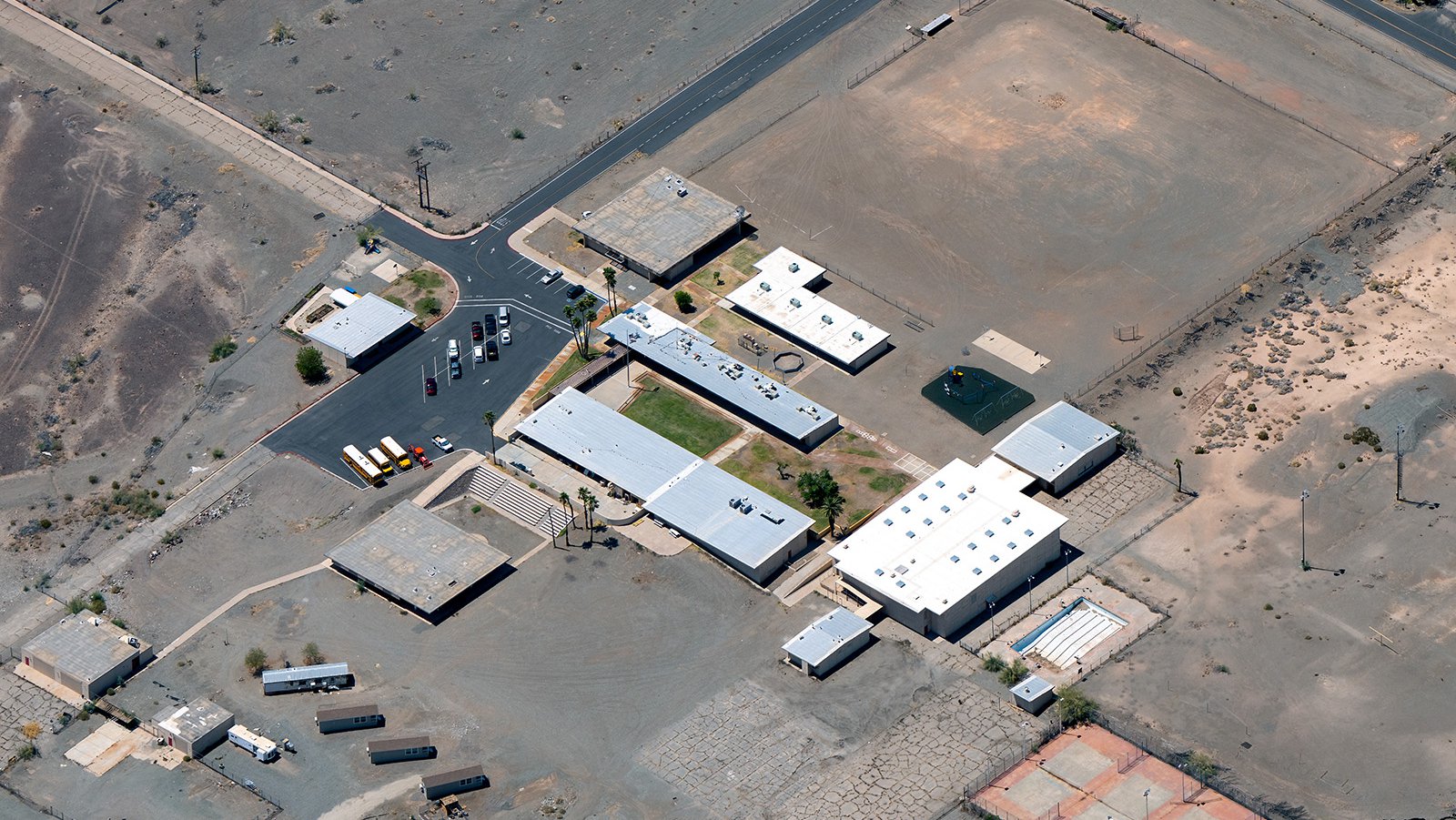
Eagle Mountain School captured from above, offering a glimpse of the town's remaining life amid a sea of desolation.
Eagle Mountain School: A Beacon of Hope
Eagle Mountain School continues to operate amid the ghost town’s decline, serving as a beacon of education and hope for the remaining residents and their children. Located outside the fenced area, the school serves approximately two dozen students in kindergarten through eighth grade. The dedicated educators at Eagle Mountain School face numerous challenges, including diminishing resources and instruction, but they remain committed to providing quality education for their students.
Eagle Mountain School stands as a beacon of hope in the desolate landscape, a testament to the resilience of the human spirit and the power of education to transform lives. It serves as a reminder that even in the face of adversity and decline, hope can still flourish.
Failed Revival Attempts
Despite numerous attempts to breathe life back into the town of Eagle Mountain, none have borne fruit. Among these efforts were the establishment of the Eagle Mountain Community Correctional Facility and a landfill proposal that faced legal battles. These initiatives aimed to breathe new life into the town and restore its former glory, but they ultimately failed to gain traction.
The setbacks faced by these revival attempts speak to the challenges of revitalizing a ghost town and the complex interplay of economic, environmental, and social factors that can determine the fate of a community. Despite the failure of these efforts, the story of Eagle Mountain continues to captivate those who seek to understand the forces that shape the rise and fall of boomtowns.
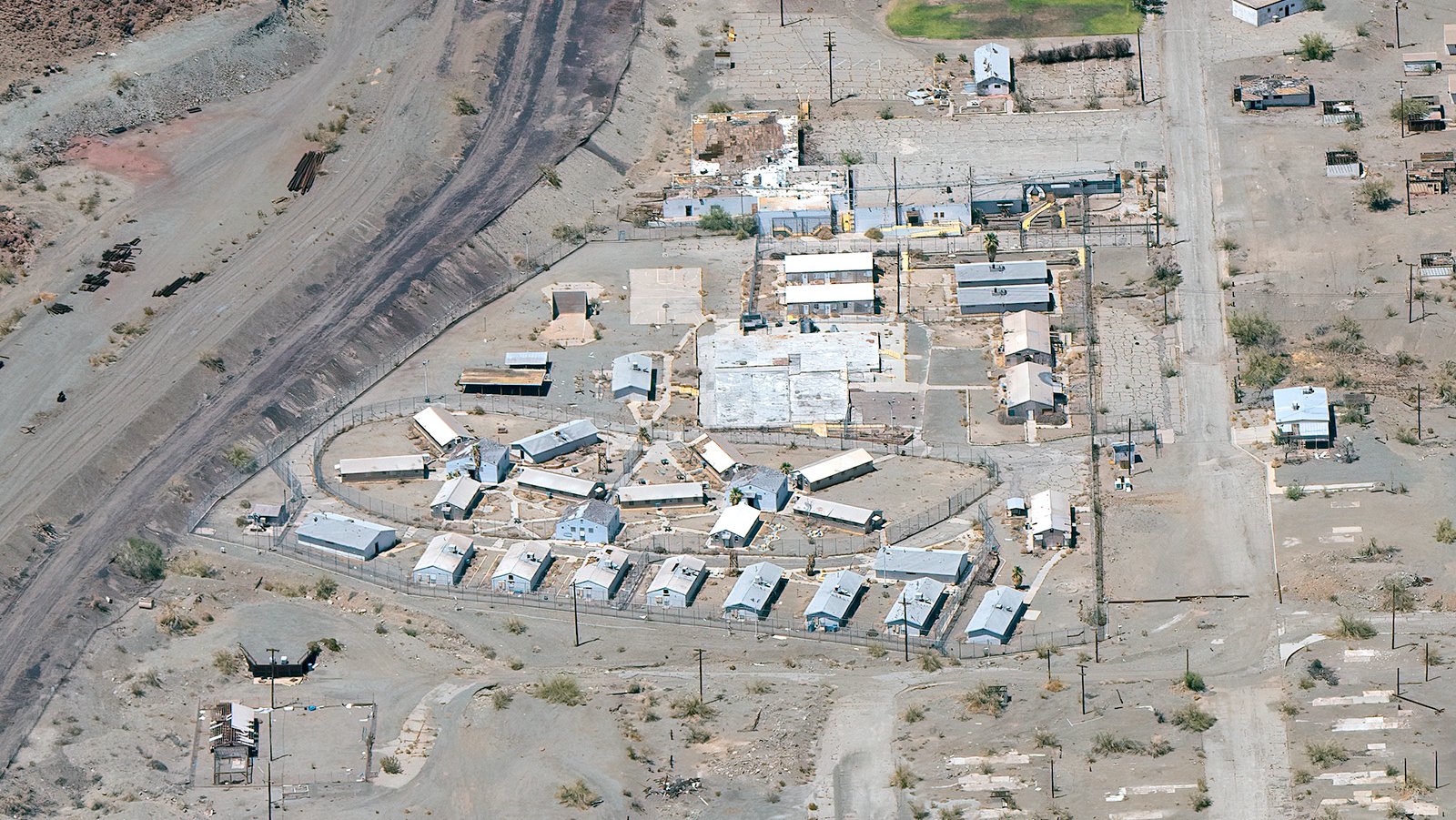
The now-abandoned Eagle Mountain Community Correctional Facility Prison, standing solitary amidst the barren desert.
Eagle Mountain Community Correctional Facility
Operating from 1991 to 2003, the Eagle Mountain Community Correctional Facility, formerly the Eagle Mountain shopping center, served as a private prison for low-risk inmates. The facility, managed by Utah-based Management and Training Corp. (MTC), was established in an attempt to bring new life to the town following the closure of the mine. At its peak, the prison housed 684 inmates and provided various substance abuse treatment programs.
However, the facility faced numerous challenges, including inmate violence and riots, property damage, and budgetary constraints. In 2003, a fatal prison race riot led to the closure of the prison, marking another failed attempt to revive the town of Eagle Mountain.
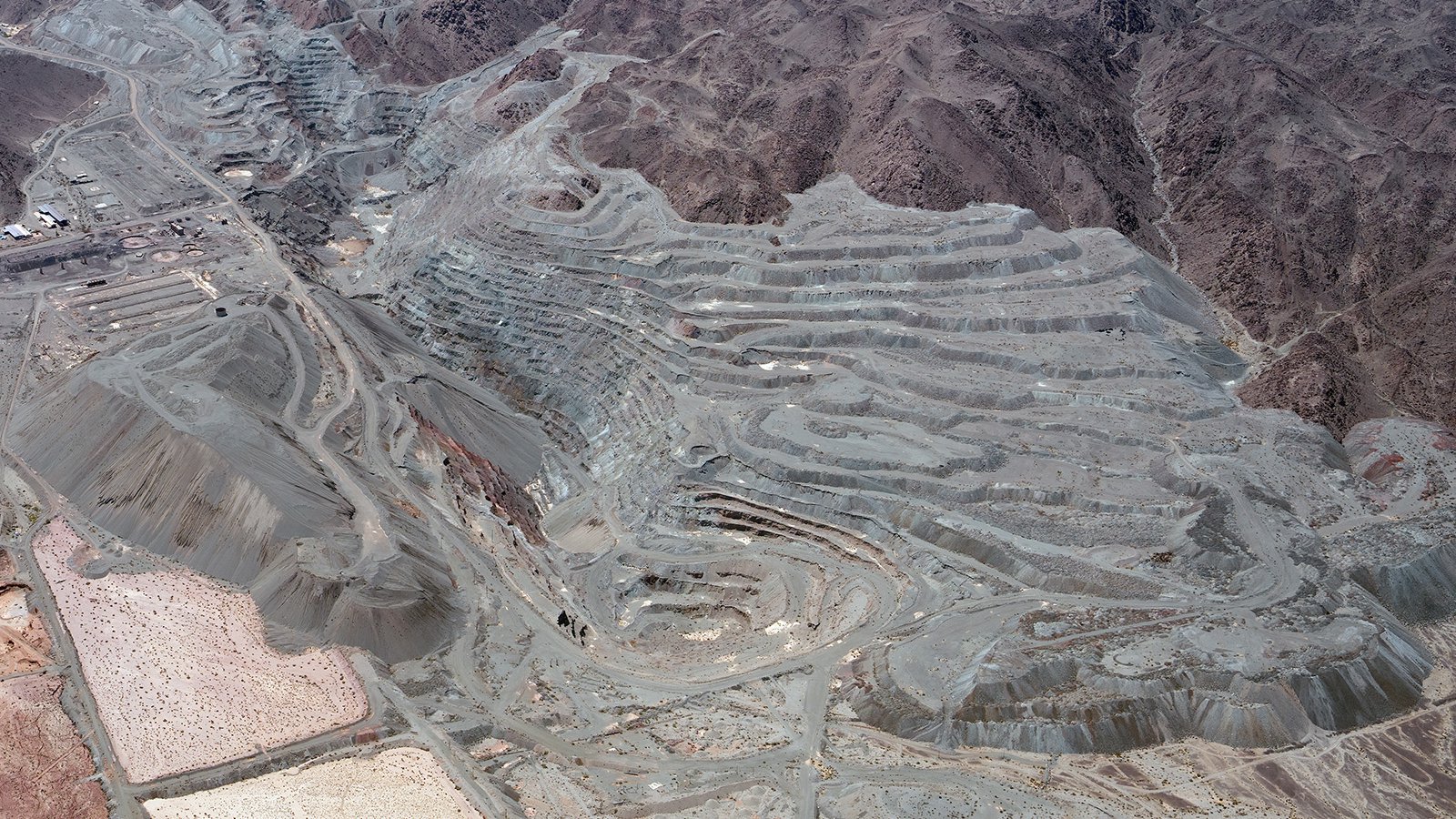
A bird's-eye view of the now-defunct Eagle Mountain iron mine, its vast expanse almost becoming the world's largest garbage dump.
Landfill Proposal and Legal Battles
A landfill proposal marked another effort to resurrect Eagle Mountain. The project aimed to create the world’s largest garbage dump, but it faced numerous lawsuits and opposition from environmental groups. Concerns were raised about the potential impact on local groundwater and the flora and fauna of Joshua Tree National Park.
After years of legal battles, the private alliance behind the project decided to abandon it in late 1999. The failure of the landfill proposal marked yet another unsuccessful attempt to breathe new life into the town of Eagle Mountain.
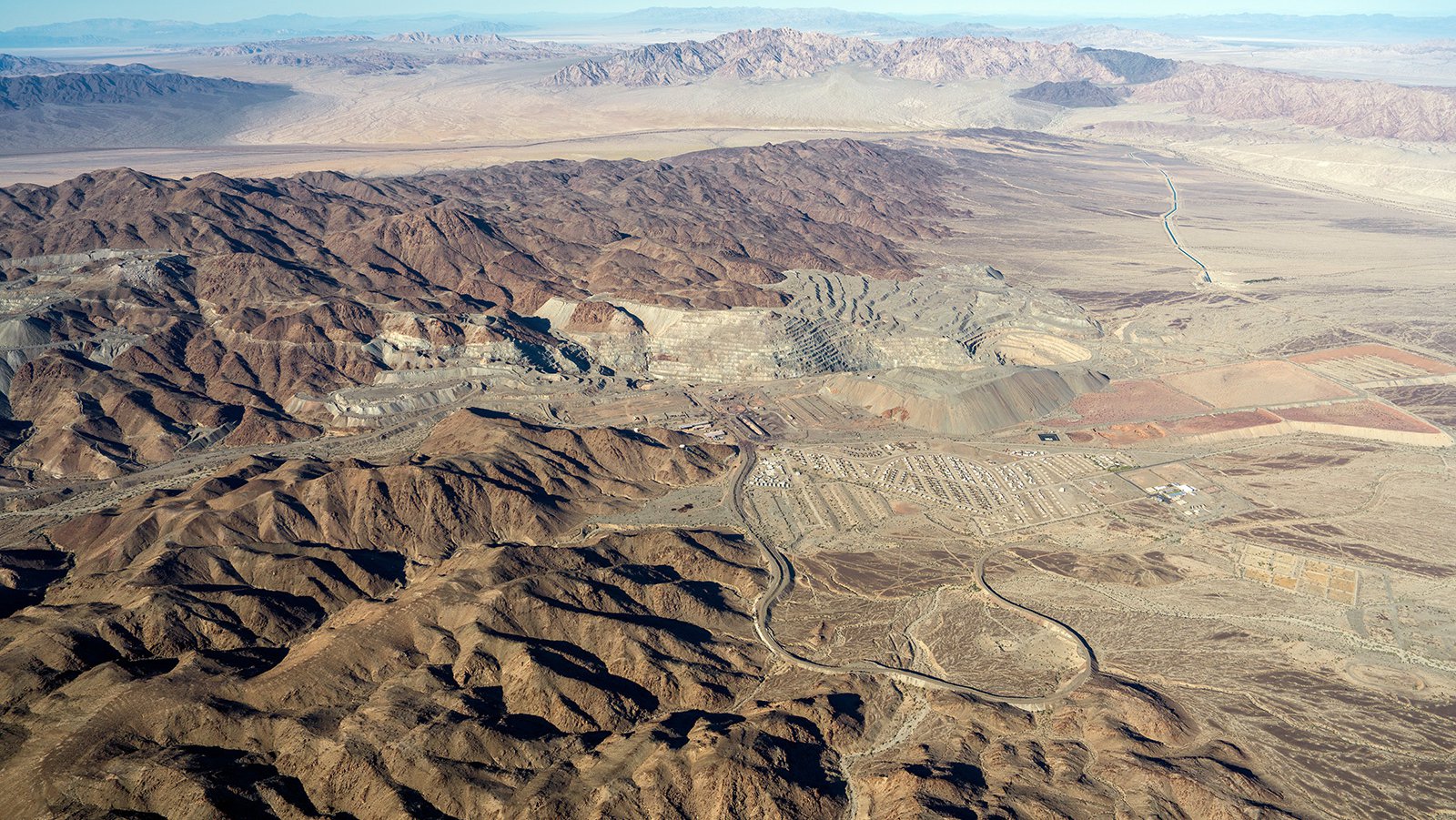
An expansive aerial cityscape of Eagle Mountain ghost town and the now-defunct iron mine, the once thriving industrial and residential areas now a spectral image of the past, slowly fading into the California desert.
Mysterious Sale of Eagle Mountain
April 2023 saw the sale of Eagle Mountain to the mysterious Ecology Mountain Holdings for $22.5 million, a transaction handled by Eagle Mountain Acquisitions. Little is known about the primary individuals associated with the company, and the sale has left many wondering about the future plans for the ghost town.
As the town awaits its fate under new ownership, the sale has only added to the intrigue surrounding Eagle Mountain. Will this mark a new chapter in the town’s storied history, as reported by the Los Angeles Times, or will it remain a haunting reminder of the past, slowly fading into the California desert?
From its dramatic rise as a thriving mining town to its haunting decline as a ghost town, Eagle Mountain’s story is a captivating tale of human ambition, resilience, and the forces that shape communities. As visitors explore the abandoned structures and deserted streets, they are reminded of the transient nature of boomtowns and the impact of industrial decline. Though attempts to revive the town have been unsuccessful, the story of Eagle Mountain continues to intrigue and inspire those who seek to understand the rise and fall of communities.